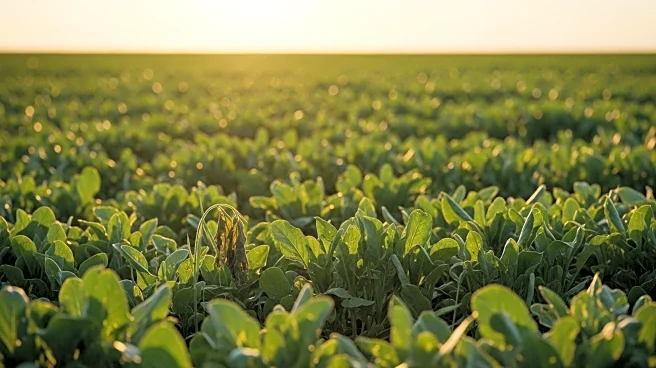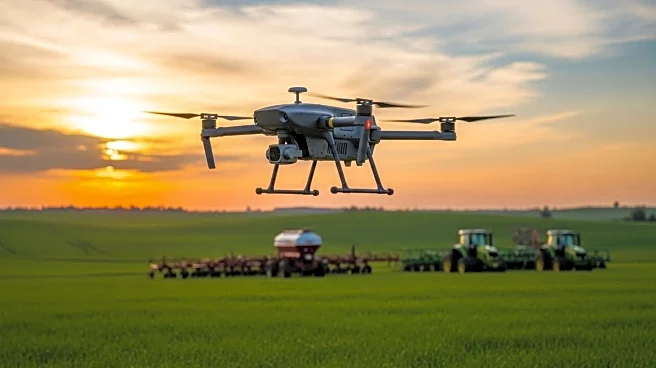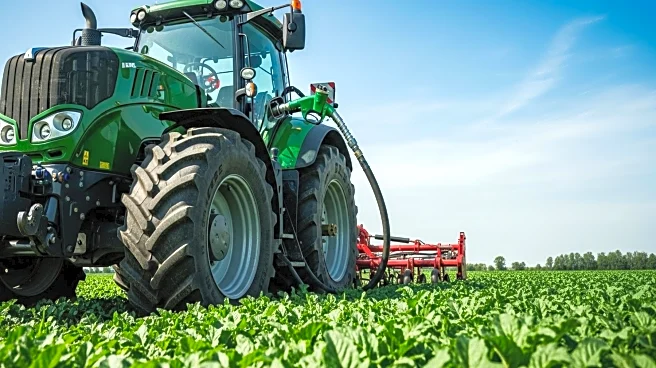What's Happening?
The USDA has released its latest Crop Progress report, detailing the status of Iowa's major crops as of late August. The report highlights that 88% of Iowa's corn crop has reached the dough stage, slightly below the five-year average of 91%. Disease pressure, particularly from southern rust and tar spot, is a significant concern for corn farmers. Southern rust has aggressively spread in some areas, affecting the upper canopy where most photosynthesis for grain fill occurs. Meanwhile, 90% of Iowa soybeans are setting pods, with disease pressures such as sudden death syndrome and white mold impacting the crop. The report also notes that 97% of Iowa oats have been harvested, consistent with the five-year average. Weather conditions have been cooler and drier, providing suitable conditions for fieldwork, with 5.6 days suitable for fieldwork reported for the week ending August 24.
Why It's Important?
The USDA's report is crucial for understanding the agricultural landscape in Iowa, a key state for corn and soybean production. Disease pressures like southern rust and tar spot can significantly impact yield and quality, affecting both local farmers and broader agricultural markets. The report's findings on disease spread and crop maturity are vital for farmers making decisions about pest management and harvest timing. Additionally, the report provides insights into the overall health of Iowa's agriculture, which is a significant contributor to the state's economy. The cooler and drier weather conditions may help mitigate some disease progression, offering a potential reprieve for farmers facing these challenges.
What's Next?
Farmers in Iowa will need to continue monitoring disease pressures closely and consider strategic fungicide applications to protect their crops. As the harvest season approaches, decisions on timing and methods will be influenced by ongoing weather patterns and disease progression. The USDA will continue to provide updates, which will be essential for farmers and stakeholders in the agricultural industry to make informed decisions. The impact of disease pressures on yield will become clearer as crops reach maturity, influencing market prices and supply chain dynamics.
Beyond the Headlines
The ongoing disease pressures in Iowa's crops highlight broader challenges in agricultural sustainability and pest management. The spread of diseases like southern rust and tar spot underscores the need for continued research and development in crop protection technologies. Additionally, the reliance on fungicides raises questions about long-term soil health and environmental impact. These issues are part of a larger conversation about sustainable farming practices and the balance between productivity and ecological stewardship.












